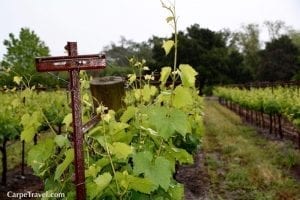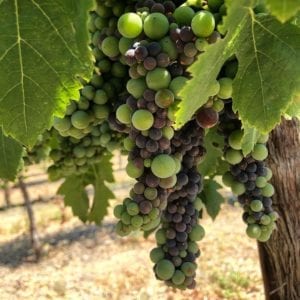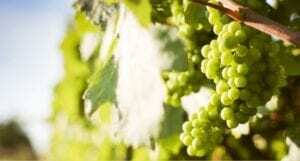Yes and no. Natural wine is a new-er category of wine that seems to be all the rage…at least for now.
Natural wine adheres to the romantic illusion that beautiful wine is a creation of the sun, the rain, and the vines, that happens in a gorgeous, lush vineyard, all alone with little human intervention. The reality is somewhere in between this illusion and the modern scientific approach to viticulture and vinification.
The term “Natural Wine” is ambiguous and different winemaking and wine consuming factions have varying definitions. Most adhere to organic viticulture and vinification. Some are more extreme in their expectations. Either way, natural wines, for many wine lovers, are wines as they should be; stripped bare and naked. “Nothing added, nothing taken away.”
The irony of modern natural wine is that it is wrapped up in the tightest, beauractatic bow. The attempts at labeling, regulating, and legislating, what it means to be natural are most unnatural. Regulators and producers are still working on identifying marks and icons for labels. Until then, natural wines are just labeled as such.
Natural wines are different from mainstream wines. Natural wine goes beyond organic or vegan wines. They aren’t just sustainable. Natural wine production is a completely unique technique that produces completely unique wines.
- – Often, they are unfiltered and contain residual sediment which adds unique flavors and textures.
- – Natural wines are less stable and susceptible to early oxidation giving the wine nutty, sherry style notes.
- – Sometimes natural wines can be downright funky.
The Story Behind the Natural Wine Movement
The modern natural wine movement was borne in the Morgon subregion of Beaujolais, France, in the early 1960’s when a young group of winemakers, dubbed the The Gang of Four; Marcel Lapierre, Jean Foillard, Charly Thevenet and Guy Breton, were inspired by a pair of oenologists exploring innovative wine making techniques that involved reducing various added chemicals from the process.
Jules Chauvet and Jacques Neauport first came together to honor the techniques and wines of their grandparents by pursuing seemingly archaic, less-invasive viticulture and vinification techniques to produce authentic regional wines. The pair of oenologists believed that “nothing added, nothing taken away” crafted pure wines more representative of their unique terroir and culture. The Gang of Four followed their research and practices, steering some French winemaking in new directions.
The Natural Wine Movement began…
Given there are no rules for being labeled NATURAL WINE, what should you look for if you’re trying to find a Natural Wine to sip? Try sticking to Organic or Biodynamic wines. Sustainable wines are also great – and delicious – choices that are good for the planet.
Organic Wine
Prefers to use naturally occurring yeasts, forbids the use of synthetic and petroleum based fertilizers, herbicides, pesticides, and other chemicals, but allows for the use of sulphur and copper to prevent fungal growth. Organic wines are often Non-GMO.
Biodynamic Wines
Takes organic practices to the next level by adhering to the philosophy of Biodynamic farming according to natural cycles, ocean tides and moon phases.
Generally adhere to organic practices but with flexibility. Occasionally, chemicals are allowed as long as the usage is minimal.
Simone FM Spinner is a top-rated university wine lecturer and certified sommelier with thirteen advanced wine certifications, a bachelor’s and master’s degree in wine studies, and is pursuing her doctorate studying the socioeconomic and cultural effects of climate change on wine. She is a sought-after wine consultant, public speaker, and published author. She organizes wine events and international wine tours through her company Wine Rocks & Chasing Grapes™©. Her website is WineRocksLLC.com





